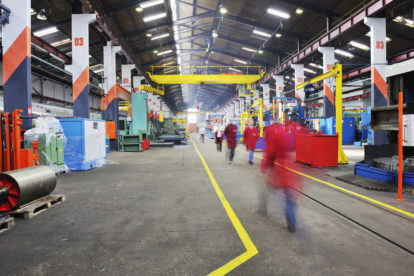How a Global Manufacturer Cut Costs and Moved to the Cloud Efficiently Using TransitionManager
Summary: TDS helped a global manufacturing firm cut costs and migrate out of an aging data center into the cloud.
TDS created a roadmap to get to their future state and a repeatable process to migrate all their business applications away from expensive and difficult to manage manufacturing plants to either public cloud or other more modern company data centers.
The Challenge
TDS recently worked with a global manufacturing firm to help them migrate out of an aging data center that was costly to operate and had frequent service interruptions that impacted business operations. One of the most important goals of the client’s adoption of public cloud was to generate cost savings.
They recognized that managing their own data center and hardware to host applications takes time, money and resources. There’s always something that needs to be updated, replaced, or repaired, and with that upkeep comes facility, equipment and employee costs. They had also experienced frequent application outages that were impacting revenue-generating business processes.
With these realities bearing down on them, the client looked to TDS and its TransitionManager software to advise them on how to efficiently and predictably migrate their applications to the cloud. Using TransitionManager allowed the manufacturer to rationalize which applications were optimal for public cloud and which applications were more suited to the firm’s other private data centers.
The client was looking to move several data centers and manufacturing plants to public cloud. They recently migrated their ERP system and moved to SAP. Most important, they wanted a roadmap to get to their future state and a repeatable process to migrate all their business applications away from expensive and difficult to manage manufacturing plants to either public cloud or other more modern company data centers. Before embarking on a complex cloud migration project, it’s critical to thoroughly understand the business priorities, analyze all applications and assess the IT ecosystem.
Without that knowledge, as this manufacturer learned the hard way, you risk unexpected outages and lose confidence in moving the project forward. Not accounting for the complexities and interdependencies across the IT landscape often leads to delays, breakdowns, and disruption to critical business services, impacting company revenue and producing internal frustration.
The Solution
1. Essential Discovery Process
The discovery phase of this project began by populating TransitionManager’s centralized database with multiple sources of client data, creating a single view of the environment. Data sources included application lists, reports, expert interviews and asset management software. TransitionManager automates data ingestion and normalization from market leading ITSM, CMDB and DCIM tools, providing users with an aggregated, consolidated
view of applications and their interdependencies across a complex, hybrid IT landscape.
This actionable view eliminates the chance of missing applications, their dependencies or how they interact. TransitionManager’s visualizations enabled the client to see their application interdependencies, identify knowledge gaps and draw attention to data points that require further investigation. TransitionManager’s Dependency Analyzer generates a complete map of all assets and their dependencies across entire IT landscape. Specific assets are identified by color based on use case. This representation shows suggested groups of assets to move together during a migration event.
2. Application Rationalization
A key element in optimizing the discovery process is understanding what the future state will look like and how to get there. Choosing the right migration strategy for your applications and business requires a careful assessment of several factors including criticality, complexity, costs, level of effort, and the current network configuration to
determine what is feasible or not. This cloud application rationalization process ensures informed decisions can be made based on the applications’ characteristics and the proposed business value.
As part of this engagement, TransitionManager software was used to gather, organize and visualize detailed information, and the TDS team worked with the client to suggest application dispositions and recommend the number and sizing of events appropriate for the cloud migration project as well as to identify risks and recommendations for premigration activities available to optimize migration events.
TransitionManager’s actionable view of the data enabled an efficient process for decision making about each application, server and database. Both business and IT worked together to score each against the company’s priorities, the criticality of the app, the associated dependencies, costs, and level of effort. The highly interconnected environment at the client presented a challenge to de-couple applications from the existing datacenter infrastructure and from dependent applications and services.
Again, TransitionManager was leveraged to ingest all the relevant data points and develop an actionable migration plan.
Download your copy:
